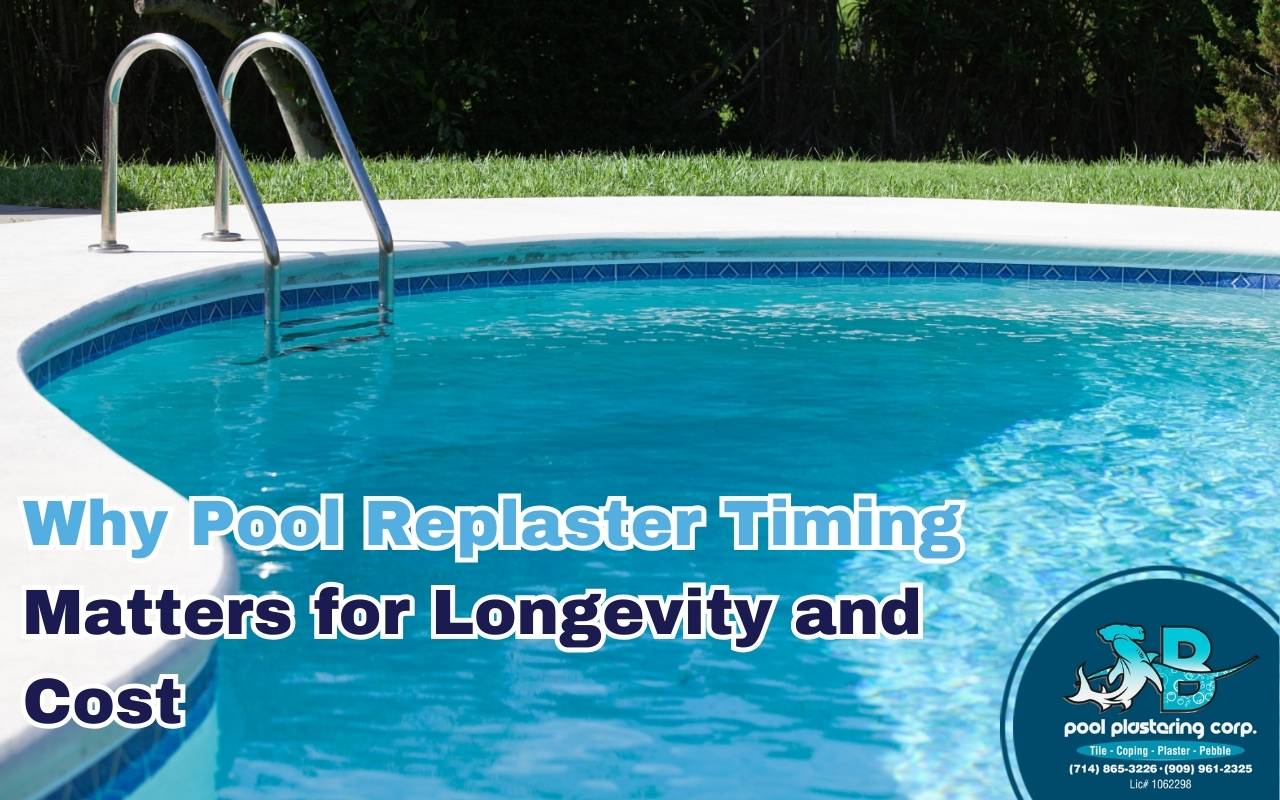
Why Pool Replaster Timing Matters for Longevity and Cost
The serene oasis of your backyard pool holds countless memories of sun-soaked afternoons and refreshing dips. However, over time, even the most cherished pools show signs of wear and tear. Cracks appear, the surface becomes rough, and discoloration may occur. Maintaining a pool is not only about beauty; it’s also about protecting your investment. This is where pool replaster timing plays a pivotal role. Selecting the right season ensures longevity and influences overall costs. For instance, fall offers a golden opportunity for replastering. While summer and spring are busy, cooler months bring natural downtime. Consequently, this window lets you repair without interrupting your swim schedule. A carefully planned fall schedule positions your pool perfectly for the next warm season. In this blog, we explore why timing matters and how informed choices bring years of enjoyment.
The Importance of Recognizing Signs of Pool Surface Deterioration
Every pool owner must watch the plaster surface closely. Over time, chemical imbalances cause the smooth finish to become rough or chalky. In addition, hairline cracks may appear due to shifting ground or freeze-thaw cycles. Larger fissures can even signal structural issues. Discoloration from metals or algae often hints at compromised surface integrity. Together, these symptoms indicate that your pool may soon need a replaster. Early detection strongly influences pool replaster timing. Addressing wear spots early prevents water infiltration, delamination, or blowouts. Conversely, ignoring cues escalates repair costs and increases downtime. Regular inspections during swim season help catch issues quickly. Write down observations and consult a professional when needed. As a result, proactive action ensures optimized timing and long-lasting results.
Factors Influencing the Ideal Timing for Pool Replastering
- Climate: Moderate temperatures support proper plaster curing.
- Usage: Schedule work during off-peak swim months.
- Contractor availability: Quieter months mean quicker scheduling.
- Budget: Plan ahead with seasonal funds.
Climate plays a fundamental role in pool replaster timing. For example, very high or low temperatures can disrupt plaster curing. Usage patterns also matter. For shorter swim seasons, off-peak scheduling minimizes disruption. Moreover, contractor availability fluctuates, so slower periods provide more flexibility. Budget planning further aligns major maintenance with available funds. By balancing these factors, you optimize both quality and cost-effectiveness.
Benefits of Conducting Pool Replastering in the Fall Season
Choosing fall for pool replastering provides unique advantages. Cooler temperatures allow plaster to cure more slowly and evenly. Furthermore, reduced contractor demand often means faster scheduling and better negotiation power. Fall also enables you to complete other upgrades simultaneously. Most importantly, your pool will be ready by spring. In short, strategic fall pool replaster timing ensures durability and uninterrupted enjoyment.
Weather Considerations for Optimal Pool Replaster Timing
- Ideal daytime temperatures: 70°F to 85°F
- Nighttime lows: Above 50°F
- Moderate humidity: Avoid extremes
- Stable forecasts: Minimize rain risks
Weather plays a critical role in scheduling. Indeed, humidity affects drying times, while rainfall risks surface damage. Aligning timing with favorable forecasts guarantees a stronger, more durable surface. Even a few days’ delay can ultimately protect your investment from costly mistakes.
Cost-Effective Strategies for Pool Replastering Projects
Managing expenses for pool replastering requires thoughtful planning. For example, buy materials during off-season sales for extra savings. Bundle tasks like tile replacement or equipment upgrades to reduce labor fees. Additionally, leverage fall schedules to secure competitive quotes. Smart coordination of labor, timing, and materials enhances long-term value while keeping costs manageable.
Impact of Proper Timing on Extending Pool Longevity
Timing directly affects pool durability. Addressing cracks and rough surfaces early prevents deeper shell damage. In the same way, fresh plaster improves water retention and resists chemical imbalance. Proper pool replaster timing maximizes surface density, reducing the need for frequent repairs. Strategic scheduling ensures smoother finishes, reduced costs, and extended pool lifespan.
Professional Insights: When to Schedule Pool Replastering
Experts recommend early fall for replastering. Stable weather reduces risks, while moderate temperatures ensure strong curing. Moreover, professionals suggest booking eight to twelve weeks in advance. This lead time allows thorough inspections and preparation. Aligning your project with quiet contractor seasons ensures quality results and smoother workflows.
DIY vs. Professional Pool Replastering: Which is Right for You?
DIY replastering may seem appealing, but it requires advanced skills. Mistakes often lead to bond failure, uneven coloration, or scaling. On the other hand, professionals bring expertise, equipment, and warranties that protect your investment. Proper pool replaster timing combined with professional service ensures durability and satisfaction.
Maintenance Tips to Prolong the Lifespan of Your Newly Replastered Pool
- Maintain balanced water chemistry consistently.
- Brush surfaces weekly and vacuum debris regularly.
- Monitor equipment to prevent water stress.
- Winterize with covers and antifreeze in cold climates.
Good maintenance practices safeguard your investment. Consequently, consistent care protects against etching, scaling, and algae growth. Seasonal preparation also ensures durability year-round. By following these steps, you maximize the lifespan of your replastered pool.
FAQs about Pool Replaster Timing
1. How often should a pool be replastered?
Most pools need replastering every 7–10 years, depending on usage and care.
2. What are early signs that my pool needs replastering?
Rough surfaces, cracks, and discoloration indicate it’s time to evaluate pool replaster timing.
3. Can weather delay a replaster project?
Yes. Extreme heat, cold, or heavy rain may affect curing and delay completion.
4. Is fall the best season for replastering?
Often yes, since moderate weather ensures quality results and less contractor demand.
5. Should I replaster myself or hire a pro?
Professionals ensure proper curing, durability, and warranties. DIY projects carry higher risks.
Maximizing the Value of Your Pool Investment Through Timely Replastering
Proper pool replaster timing protects both beauty and structural health. Choosing fall provides the best balance of weather and contractor availability. With the right planning, your pool will be ready for spring enjoyment. For expert help, explore our Pool Re-Plaster Riverside CA services or learn about pool resurfacing vs. replastering. For long-term tips, visit our guide on durable pool resurfacing. If you are ready to start, contact us today for professional support.




